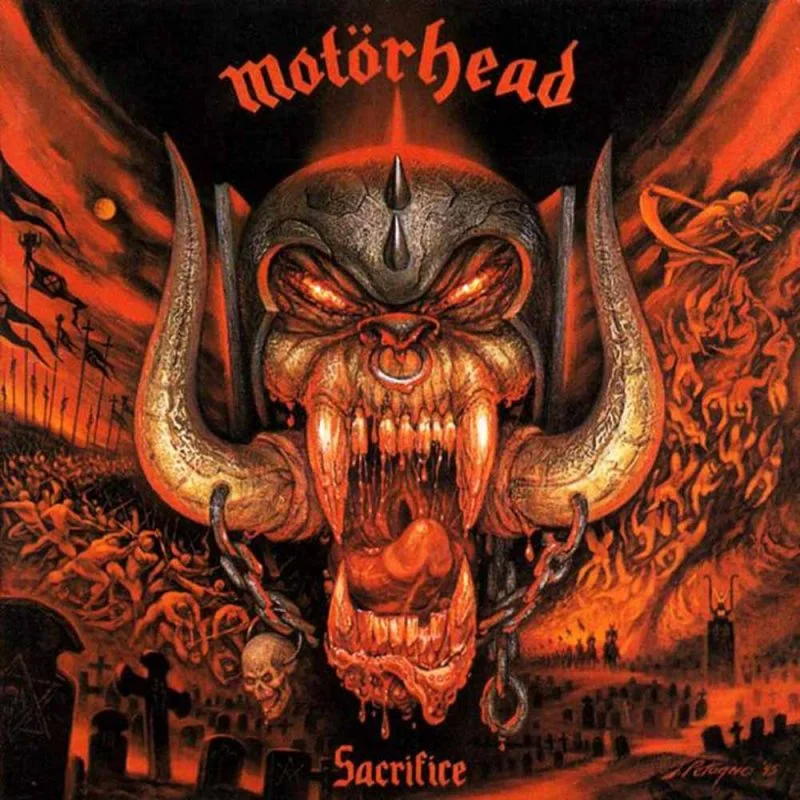- cross-posted to:
- [email protected]
- cross-posted to:
- [email protected]
4chan can be surprisingly perceptive sometimes.
Broken clock, etc
It’s almost like out of a very large amount of people, a few of them might sometimes be smart.
How common/usable is subway in bigger cities? Here in Prague we have an amazing public transport, even with priority lanes for buses at some places and most importantly a pretty decent subway. I’ve never had an issue getting anywhere around the city in a short time (I can get anywhere in the city within 1.5 hour max (that is including suburbs around Prague), around 30 mins to places around the center), and the cost of an unlimited year-long ticket is just 150EUR.
Very few cities have any acceptable public transit. The only reasonable options are in the NYC area.
unfortunately it is not the case for most of countries. For example, here, in Azerbaijan, rural public transport basically doesn’t exist, and in capital city - Baku - schedules, traffic, prices… They all suck. We only got underground metro, but as that is only sane transport, everyone uses it and on critic hours it also suck. Sadly.
It’s insanely bad. Hell, Canada has shown that public transit is viable with the North American development model, but the US simply refuses to invest money into public works.
Vancouver SkyTrain and Montreal REM/Metro are both fast, highly efficient subway systems that are able to navigate single-family housing development. Why can’t the US?
Come to Toronto/The GTA, the lack of investment in public transit is on par with the rest of North America.
When I was in Toronto, the transit wasn’t great but it was at least better than Boston/Philadelphia…
Dont take it the wrong way but 1.5 hours doesn’t sound great for every day travel.
That’s to the opposite side of the city, I’m guessing every day travel would be somewhere around those 30 mins
That was an extreme, if I really need to get somwhere on the outskirts away from the subway. I don’t think I’ve ever had to travel for longer than 40 minutes in a long time, an average not counting work (which I have literally two tram stations near home) would be around 30 minutes. Definitely way faster than by a car.
Public transportation in the US is at best, an afterthought. A lot of major cities have buses/trolleys but not many have trains/subways. Only the largest cities have a workable public trans system such as New York, Chicago, San Francisco.
And as someone who lives right outside SF, yes it’s one of the best cities for public transit in the US, but it can still take 2 hours to go somewhere that would take 30mins in a car.
Not all the time - sometimes it’s just as fast as a car, but often enough that it’s a deterrent.
And mind you, I live literally across the street from a train stop, so public transit is way more convenient for me than for most in the area.
Portland is talking about eventually making its MAX Light Rail a cut-and-cover subway over the course of the next few decades. The system is suffering from the effects of decisions made in the 1970’s when the system was being created. At that point, it was limited to a stretch from the suburb of Gresham to downtown. Since then, that line has been extended to go to a completely different set of suburbs. So where a train being slowed down by downtown traffic was acceptable when that was the terminus, now that is unacceptable because it will affect many more stops.
The light rail also has all four lines in the current system going over the Steel Bridge. In the event of the Cascadia Subduction Zone earthquake, that aging bridge is predicted to crumble, crippling the system for years. It also acts as one of the chock points in the system. Currently that’s not the biggest bottleneck - that’s hiring drivers - but as system ridership recovers post-COVID it will become a problem for schedules again.
A few things need to happen before Portland’s ready. First and foremost is simply having more people using the system. Right now the capital costs are prohibitive given the ridership. I think this will continue to improve over time. Portland has increasingly bad traffic and it’s only getting worse. Transit is often faster than going by car, depending on the trip. The city hasn’t had much stomach for expanding roads over the past few decades, so I think the main outlet will be transit.
LA used to have one if the best trolley systems, then it got ripped out. It was the sub plot to who framed Roger Rabbit.
In the US, public transportation is pretty much unusable in bigger cities except for NYC.
America has this weird, masochistic relationship with cars that just gridlocks everyone. But “FreEdoM.”
Chicago?
Chicago is pretty expensive for public transportation. A monthly pass is $75 for the L and buses. A commute from the northern suburbs is $100 a month for Metra trains and an additional $30 per month for buses and the L. There are discounts for people that qualify.
The price and the poor schedule to northern suburbs makes it unusable for me. It’s great for weekend trips to the city.
$130 is still a cost saving compared to gas, depreciation, and renting a parking space in town though, isn’t it?
For many people that’s true, especially if you don’t need the Metra pass. I’d consider it if the stops to my station were scheduled more often. The bar car is gone from the Metra, but they still allow alcohol so you can relax, have a drink, and listen to music.
One potential reason posited by The 1619 Project is due to white Americans moving out of metro areas after WW2 in order to “escape” black residents. Then, they restricted expansion of public transportation development to those areas because making them more accessible and usable would potentially result in a influx of poorer, black residents who can’t afford a car to commute to the suburbs.
The specific example they used is Atlanta, which has staunch racial lines, horrible public transport, and some of the worst traffic in America. They make a very compelling case.
Here is the relevant New York Times article about it and it’s Chapter 16 in the actual book
This must also happen in reverse. The hip expensive city center and the poorer suburbs?
I think definitely in downtown areas with a large night culture, but to a much lesser extent. The entire city center isn’t expensive, just the “hip” areas where the money is being spent. There are tons of poorer areas inside city limits that definitely have a lower cost of living compared to owning a house and a car
It’s my freedom to sit stuck on hot asphalt for hours at a time. Gridlock is real American freedom.
Oil and automotive companies literally tore most of public transport out in US way back when.
They would invest into the local tram companies, buy them out, then close and tear out the lines.Not many U.S. cities have a subway. I think the only substantial subway system is in NYC. The city I live in has a very short commuter rail line that doesn’t go to/from anywhere people want to go. Buses are gridlocked in traffic like everyone else, and have to make frequent stops, so it can take something like 2 hours to travel 10 miles. The low-wage workers I know without vehicles just spend $40/day on Uber to commute to work and back (which is a significant percentage of their pay).
NYC is by far the best, but several other cities have fairly decent subways. Boston, DC, Chicago, and San Francisco have decent systems, although Chicago’s is an elevated train and Boston’s has had increasingly severe issues due to underfunding maintainence for decades.
deleted by creator
And I’m comfortable and having fun (with my stick shift) every time 😎
I felt the same until really settling into my career.
You can have all the fun you want playing with your stick. The post is calling out a system that forces people to drive to get around and creates infrastructure like that shown in the image. Driving would be a lot nicer if the roads weren’t full of people who would prefer to use other modes.
I love driving too, but fewer lanes with more transit/cycling infrastructure/stricter testing would let those of us who enjoy driving (and are safe doing so) to have a more open road
This shit is pure madness
Toronto looks exactly like this too. 😮💨
Not at all. The 401 at most has 14 lanes across and not the 26 in this photo (at least based on a comment). That being said, the toronto subway system would benefit from an overhaul instead of the proposed highway 413. Additionally, mandating a max price somehow on the 407 could help to significantly reduce traffic on other highways. As much as people like to complain about Toronto, I do find the bus system to be better than most.
In the photo only 14 of those lanes are the highway, the rest are parallel streets and on/off ramps.
From my count it is more than 20 lanes, maybe you considered the collectors to be on/off ramps (they are not). I based the 26 lanes on this comment.
"After widening was completed in 2008, a portion of the highway west of Houston is now also believed to be the widest in the world, at 26 lanes when including feeders. - (Wikipedia)
WTF"
Even if you include feeders on the largest highways going through Toronto, it is not close to 26 lanes.
Starting on the right, you have a ground level road with two lanes going either direction, an off ramp, 5 lanes of collectors, a transition between collectors and express, then 2 lanes of express, then 2 lanes of express the other way, a transition, and 5 lanes of collectors.
And I was basing my comment on Toronto looking like this on there being sections of the 401 and 400 that are similarly around the 14 lanes wide seen in the photo.
It depends on where you count from. If you count near the bottom, there are 11 lanes across in one direction, meaning a total of 22 lanes which matches the 26 in the other comment if you include and exit and enter lane on either sided. The 401 has 3 lanes in the collector’s and 3 lanes in the express meaning 12 lanes total for both directions you could add 4 lanes which go to/from the collector and express for 16 lanes total. Is this similar to the 14 lanes you claim? Sure. But the 401 and 400 highways do not get nearly as wide as the one in the image at its widest.
It depends on where you count from. If you count near the bottom, there are 11 lanes across in one direction, meaning a total of 22 lanes
No, it doesn’t, because feeder lanes have always been excluded from the discussion, since the lane counts listed for the 401 don’t include them.
And I’m sorry but just shut up and stop talking. Multiple sections of the 401 running right next to highway 7 look identical to this, as do parts of this the 400, the qew, and the 403 / 407 merge areas.
Toronto and southern Ontario as a region can’t say shit when it comes to regional transportation networks. We designed one of the worst fucking transportation systems imaginable.
We built the whole region as a hub and spoke model with a singular hub (Toronto), that everything runs to. We failed to interconnect any other cities in the regions while also failing to build any adequate public transit within any cities that aren’t Toronto. We built a whole GO train network that again connected nothing to nothing that wasn’t the financial district of Toronto to random Suburban parkings lots at rush hour. When I originally said that Toronto looks just like this photos that is true both metaphorically and as I’ve printed out, repeatedly literally.
Firstly, there is no reason to say shut up. Being wrong doesn’t mean you should also be rude.
Just because you didn’t consider feeder lanes does not mean they were not or should not be considered. Highway 7 is not really ever visible from the 401. When it is close, it connects to the largest airport in the country, which is why there are so many interchnages there. An express transit system that could bring people to and from the airport from surrounding regions would be a significant improvement, but this is not the situation for the majority of the 401, which connects larger and smaller cities from Quebec to Windsor. An express train following a similar path could really benefit 6 the current system is not as bad as you claim. I live in the Durham region and if I want to, I can go to Burlington by train for like $10 and around 2 hours which is certainly reasonable. What did you print out and what printer did you use?
It’s actually quite wiggly
But you dont get it, managers need you at the office so they can feel important. You just need to lose 3 hours of your day, spend more money and pollute more, STOP BEING SELFISH!
Houstonian of 30+ years here.
Even with the insane number of lanes available, driving anywhere inside beltway 8 between like 12 pm and 8pm is hell on earth. And outside those hours, you’re playing chicken with drunk drivers.
Before I started working remote, I used to clock my average speed to and from work. Most of the time it was 15-20mph on a 65mph freeway. Literally bicycle speeds. Without cars or gridlocked traffic, I could have commuted faster on a bike.
More than one person dies in Houston traffic every day on average. This is probably the shittiest and most expensive form of mass transit mankind will ever build. At least I hope this is as bad as it ever gets, lol.
I’m sure another lane or two will fix the problem!
Going 20 mph for any distance on a bike includes and assumption of good health, includes carrying a change of clothes, and shower which most workplace don’t offer.
Or an eBike
This is true, particularly in the brutal heat this summer. My mind just turns to selfish solutions when I’m stuck in bumper to bumper traffic.
You would think that somewhere between the 10th and 26th lane of this urban hellscape, someone calling the shots would stop to ask “hey guys, y’all think maybe there’s a better way to do this?” But since this is 'murca, that guy probably got fired and replaced by some ex-executive of a company best known for its crimes against nature.
How far did you have jt to work? Woukd it technically be cyclable (albeit not on the freeway)?
Last time I was in Houston I was driving in bumper-to-bumper traffic that was going 95 mph. I looked over to my right and saw a group of five cars pass me going at least 10 to 20 mph faster. This would not have been remarkable except that I was in the right lane and these cars were passing me on the shoulder.
This being Houston, though, that’s still probably not remarkable.
Can confirm, this happens a lot too. That level of recklessness should be remarkable, but that’s just how people roll around here. There’s a special sort of Houston PTSD that comes from almost dying in a car on the way to work every single day.
Is that a typo? Or were you actually bumper to bumper going 95 mph? That seems like some death race material
NOT a typo. 95mph and bumper-to-bumper.
Unfortunately I don’t think that is a typo, lol. Death race is definitely how I would describe the I-45 Houston experience. If I’m not mistaken, the section of it that runs through Houston is actually one of the most dangerous stretches of road in the entire US. People absolutely tailgate at 90+ on that road.
I live in a medium-sized city and I learned years ago that if you want to get anywhere on time, stay off the freeway. It’s not nearly as wide, but it has on ramps at shit intervals and the on ramps mostly give you no room to accelerate to highway speeds, so it’s always congested. I’m actually about to go a couple towns south as I write this and looking at GPS the freeway route which is the most direct will take 20 minutes longer than simply going through back country roads that add an addition 10 miles to the trip.
Freeways cause traffic by creating bottlenecks.
Imagine the insides of your lungs after years of that.
Air quality (or rather the lack thereof) is a problem in parts of Houston. If you ever want to go down an internet rabbit hole, google the Houston cancer clusters. Or the Brio superfund (not superfun) site. I try not to think about it when I’m outside taking a walk 🫠
Read again.
Without cars or gridlocked traffic, I could have commuted faster on a bike.
It’s absolutely insane how many people die every single day because we thought it was a good idea to let everyone operate multi-ton pieces of heavy machinery at hundreds of km per hour on the reg.
How the fuck is there more regular testing and training for people driving forklifts than Dodge Rams?
To be fair, those forklifts can be quite dangerous. Just ask Klaus.
Klaus seems like a fine dude
Seemed* 😔
Simple, if you fuck up on a forklift you are damaging company property.
And as we all know, company property has more rights than people.
I still can’t get over how two lanes wide rail system can be more efficient than whatever I’m seeing now.
Key word is can be. If transportation planners are lazy enough to only build more lanes on the major highway, who’s to say they can build an efficient rail system. The major issue is a misallocation and a general lack of funding for transportation projects.
Eye opening
Government offloaded transportation onto individuals and parking onto business, now everyone is worse off.
The Federal Highway Administration has a multi-billion dollar budget, and doesn’t include the multi-billion dollar budget each state allocates to their state highway departments, or the multi-million dollar budget most large cities allocate to their streets and highways departments, and many cities unconditionally grant valuable street real estate to individuals to park for free.
It’s not an anarchocapitalist conspiracy, it’s a massive subsidy for motor vehicle owners.
bUt pUBliC tRanSpOrTAtiOn nEeDs tO mAkE a pROfiT
The answer is because local governments prioritized cars over streetcars and public transportation:
The real problem was that once cars appeared on the road, they could drive on streetcar tracks — and the streetcars could no longer operate efficiently. “Once just 10 percent or so of people were driving, the tracks were so crowded that [the streetcars] weren’t making their schedules,” Norton says.
We used to have public street cars where I live that took people up and down the hill, but they sold out to a car company. I believe it lasted 2 years before the car company shut it down all together. Wild stuff!
Just get a bicycle bro
I drove 550 miles to another state for work travel, bringing an entire car load of work related stuff too. Doing that on a bike would be pretty hard…
deleted by creator
80% of the US lives in metropolitan and micropolitan areas. Most people work in the same metro or micropolitan area that they live in.
Biking will never work for every trip for everyone. Public transit will never work for every trip. But it’s something that can work for many more trips, given better zoning & infrastructure. If you’re in a town, city or suburb, you shouldn’t need a car to buy milk or have a pint with friends.
Getting most people out of cars is good for everyone. Cars lanes have much, much lower throughput than bus lanes or bike lanes do. Think about how much nicer driving is if you’re not stuck in traffic.
I did that until I got hit. I’m not willing to die to get to work.
When I had an actual separated bike path, though, it was wonderful.
Yeah, because biking 35km soon after waking up, then another 35km after work, is super easy for sedentary people /s
You won’t be sedentary after a month of that though!
If the transit doesn’t kill me first. For my personal situation, half of that course would be in highways with cars going at 80+ km/h.
Luckily, I can and do take a bus instead of driving there, saves me so much stress and headache, not to mention that I can use the ~1h downtime to watch or read something
I live about 45min outside of a major city. I’m also looking for my first career type job. We do have a train that goes into the city which my mother has taken for many years. The only way I’d be ok commuting in would be if I can take the train or a bus. Thinking of spending an extra 10hrs+ driving each week sounds so terrible. That’s 25% more hours each week that I don’t get paid and instead have to pay money. The only other way would be a hybrid schedule with only 2 days commuting per week.
I actually get kind of excited to commute by train, I used to not have a car up in the twin cities and I read so much more having to take public transit. I would totally get a steam deck or ROG ally and finally get to play Hades and Hollow Knight.
There are downsides though. Like if you want to go by the store or a friend’s on the way home you probably can’t. Also if you just miss your train, you might be waiting a long while. Lastly our train here is fairly dangerous and the nearest stop is in one of the most dangerous cities in the US.
I wish biking was easier but where I live there is no way I could get into the city. Plus I used to bike to my first job, about 5 miles, and it sucks to get there and be sweaty. Guess with e bikes now that isn’t as big of a deal.
I have a game that I always play on the road. Either I play it, or I sleep, if the day or the night before were rough. The fact that I can do either and chill until I get to work or home is fantastic. Where I live, the drive culture’s pretty bad and you always have to be hyper focused during the entire drive.
Also, a part of my salary is calculated based on how far I am and how long it takes to commute. If I drive, the cost of fuel easily exceeds that part of the salary.
Dies in a week from sweating
That’s pretty easy to do on an ebike!
https://duckduckgo.com/?q=einsitzer+auto
Yes, german. English pages are mostly making fun of the theme, displaying F1 cars and so on. Different mindset.
in most parts of us that is not an option any sane person would choose
This will soon become top 100 most popular photos. Its synonymous with car dependency and post WWII American urban planning
Ah ha! I see the problem. It looks like more lanes may be needed.
Just one more lane bro. https://youtube.com/shorts/0dKrUE_O0VE?feature=share












